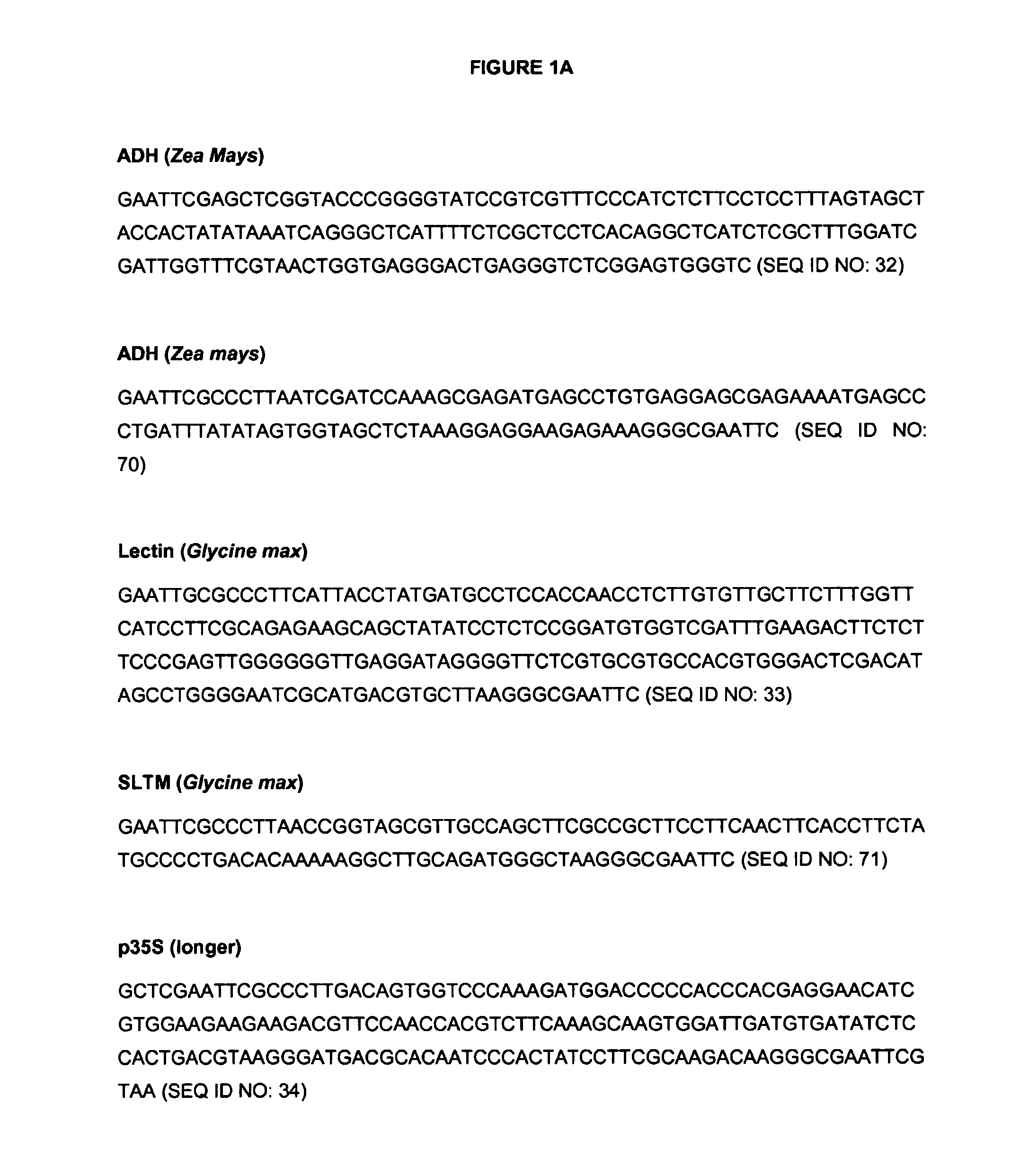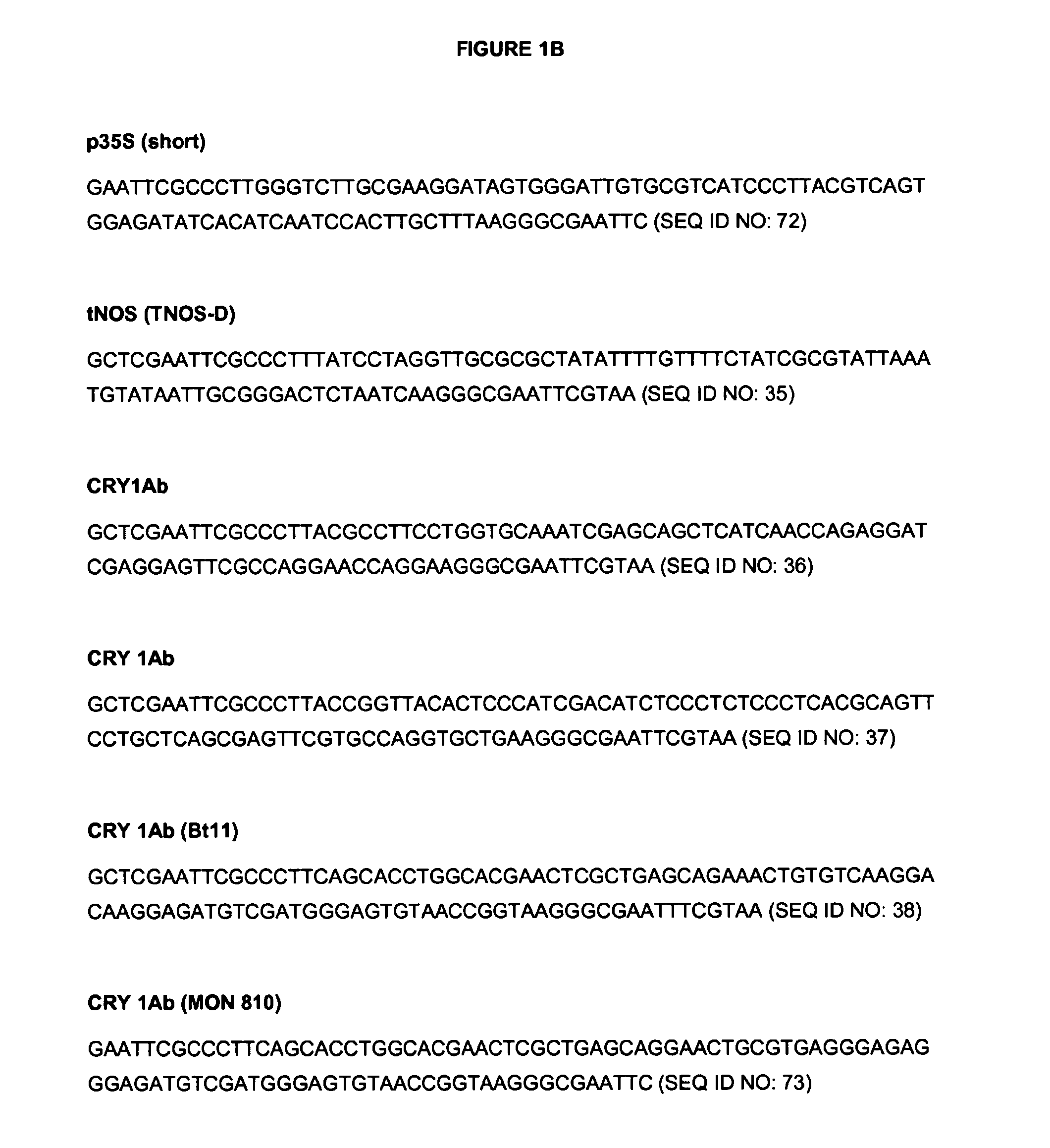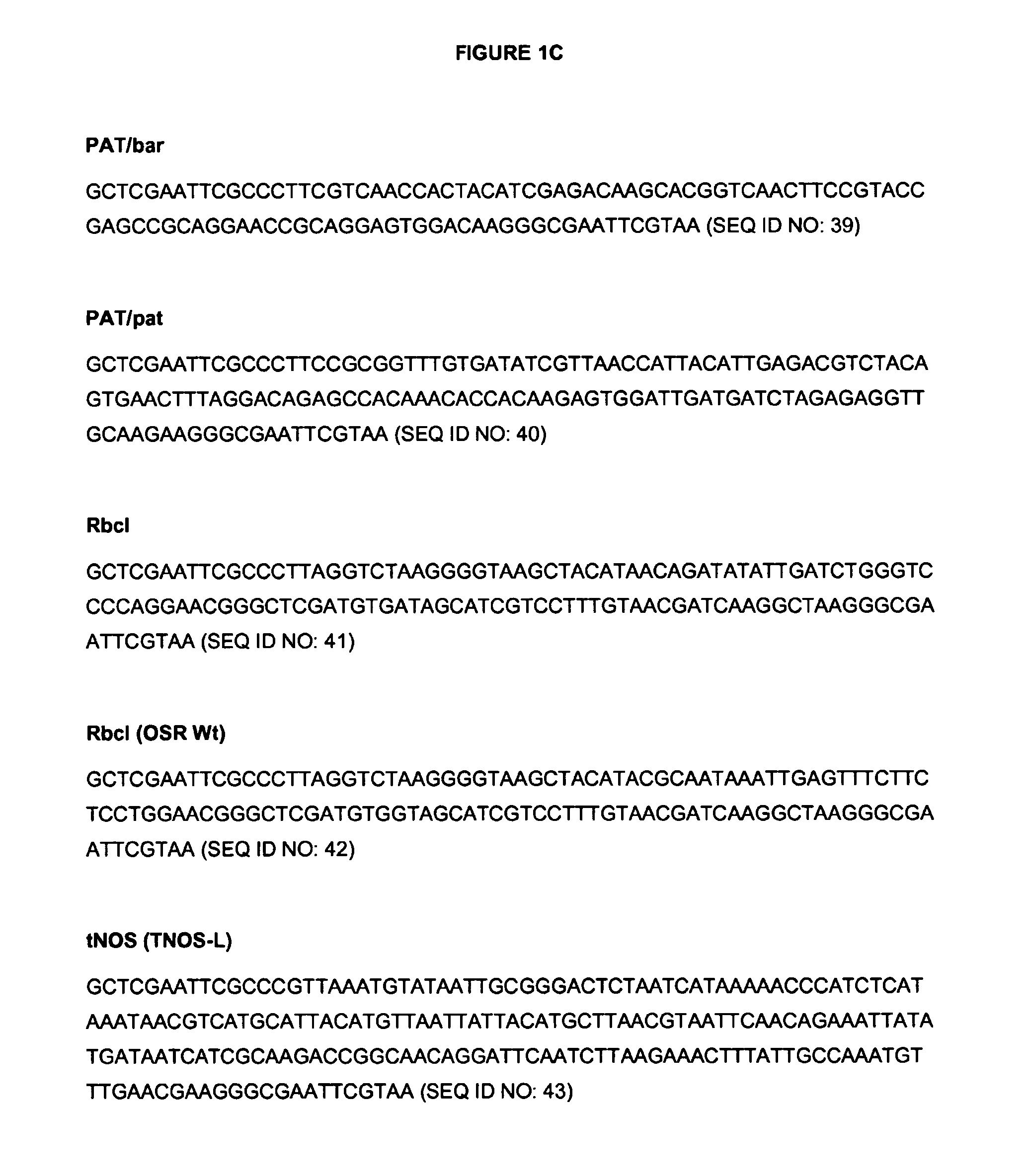Transgenic plant event detection
a technology of transgenic plants and events, applied in the field of transgenic plant event detection, can solve the problems of laborious and cost-intensive, and achieve the effect of reducing effort and improving the reliability of material detection
- Summary
- Abstract
- Description
- Claims
- Application Information
AI Technical Summary
Benefits of technology
Problems solved by technology
Method used
Image
Examples
example 1
Amplification Conditions for Select Primer Pairs Listed in Tables 1 and 4
[0337]SYBR Green detection real-time PCR was optimised for amplification of amplicons from nucleic acids “p35S”, “tNOS”, “Cry1Ab”, “PAT / Bar”, “PAT / pat” and “CP4-EPSPS” using respective primer pairs listed in Tables 1 and 4.
[0338]DNA was isolated from events containing (positive control) or lacking (negative control) these nucleic acids, including events Bt11, Bt176, MON810, MON40-3-2, TC1507, NK603, MS8 / RF3 (see Table 5), using CTAB isolation from leaf tissue material.
[0339]PCR reactions contained SYBR Green PCR Master Mix (Diagenode, ref: GMO-GS2X-A300) 1×, Forward primer 250 nM, Reverse primer 250 nM, Template DNA 50 ng in total volume of 20 μl. PCR cycling involved Step 1: 1×[50° C., 120 sec]; Step 2: 1×[95° C. 600 sec]; and Step 3: 40×[95° C. 15 sec, 60° C. 60 sec] with fluorescence acquisition. Applied Biosystems Prism 7700 was used. Melting curve analysis was done at gradient from 50° C. to 95° C. over 12...
example 2
Exemplary Simplified Method According to the Invention
[0341]A hypothetical sample was made by adding of Bt176 DNA to unrelated carrier DNA. The sample was screened for the presence or absence of “p35S”, “tNOS”, “Cry1Ab”, “PAT / Bar”, “PAT / pat” and “CP4-EPSPS” using the real-time PCR methods of Example 1.
[0342]The present simplified method intends to conclude on the potential presence or absence in the sample of material derived from Bt176, Bt11 and NK603.
[0343]After testing, the sample is positive for p35S, Cry1Ab and Pat / Bar but not for the other tested nucleic acids. Hence, the sample can be represented as set GSAMε{p35S; Cry1Ab; Pat / bar}. In this exemplary assay (where the presence of Zea mays nucleic acids is not examined), the event Bt176 is represented by set GBt176ε{p35S; Cry1Ab; Pat / bar}, event Bt11 by set GBt11ε{p35S; tNOS; Cry1Ab; Pat / pat} and event NK603 by set GNK603ε{p35S; tNOS; CP4-EPSP}.
[0344]Accordingly, since GBt176=GSAM, material from event Bt176 may be present in th...
example 3
Exemplary Description of a Kit According to the Invention (96 Well Plate Setup)
[0348]Nucleic acids to be screened: “Zm”, “Bn”, “Gm”, “p35S”, “tNOS”, “CP4-EPSPS”, “Cry1Ab”, “PAT / bar”, “PAT / pat” as defined above using primer pairs as defined in Table 1 above, as well as generic plant gene amplified using primer pair SEQ ID NO: 26 and 27 (Table 4).
[0349]Optionally, such as on request, the kit may also include taxon markers for rice (“Or”), cotton (“Gs”), sugar beet (“Bv”) and / or potato (“St”), using the corresponding primer pairs as defined in Table 1.
Operational Conditions of the SYBR Green Q-PCR Methods
Reagents: SYBR Green PCR Master Mix including the HS Taq-polymerase; primers 20 μM; nuclease-free water
Equipment: ABI PRISM® 7700 Sequence Detection System, 7300 Real-Time PCR System, Laminar Flow, Pipettes 20, 200 et 1000 μl, Sterile, aerosol-resistant pipette tips, Optical 96-well reaction plates, Optical caps
Protocol: The PCR is conducted in an ABI PRISM® 7700 Sequence Detection Sys...
PUM
| Property | Measurement | Unit |
|---|---|---|
| Tm | aaaaa | aaaaa |
| Tm | aaaaa | aaaaa |
| Tm | aaaaa | aaaaa |
Abstract
Description
Claims
Application Information
 Login to View More
Login to View More - R&D
- Intellectual Property
- Life Sciences
- Materials
- Tech Scout
- Unparalleled Data Quality
- Higher Quality Content
- 60% Fewer Hallucinations
Browse by: Latest US Patents, China's latest patents, Technical Efficacy Thesaurus, Application Domain, Technology Topic, Popular Technical Reports.
© 2025 PatSnap. All rights reserved.Legal|Privacy policy|Modern Slavery Act Transparency Statement|Sitemap|About US| Contact US: help@patsnap.com



